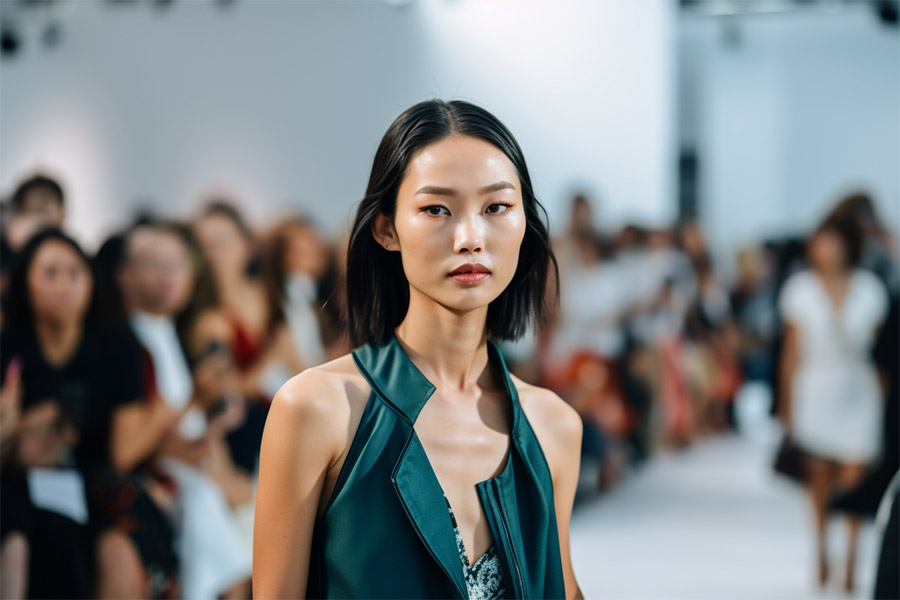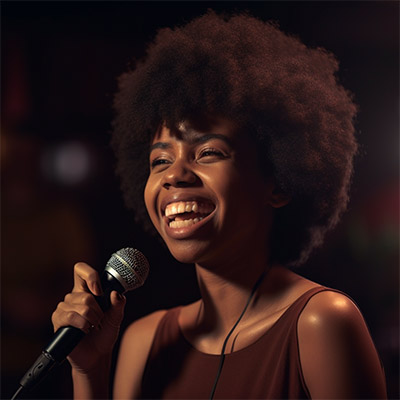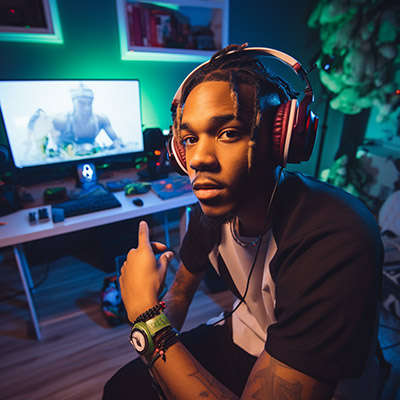
Runway Model
Will AI replace Runway Models?
Modeling in general is being affected by AI in real-time. Designers, art directors and brands are already using AI image generation tools, to produce photo-realistic images of models, in any setting they require.
This trend will only increase with the recent (at time of writing) release of Midjourney v5, which allows anyone to produce photo-realistic images of people. To further this point, all of the illustrative photos on this website, including the model on this page, were made entirely using generative AI.
It's fair to say therefore that as of March 2023, it is already challenging, if not impossible, to distinguish real photos from virtual ones, when it comes to photos of people. In short, commercial models therefore - those who are photographed for campaigns, billboards, magazines, catalogues and advertisements - are already in trouble with AI. They're already feeling the pinch.
Commercial Reality
For a company, the cost to hire a model, photographer, stylist, make-up artist, not to mention finding or paying for a location to shoot, in addition to the time and work involved in planning, makes traditional fashion photography one of the first industries to fall foul to AI.
This is affecting many models and photographers already.
Runway models on the other hand, are however safe in their jobs for the foreseeable future, for reasons that will be fairly obvious, but are worth exploring in more detail.
Runway Models and the History of Fashion
For several decades, runway models have been the epitome of fashion, presenting the latest trends and fashions to the world. The history of fashion models began in the 1860's, but took off after World War 2, and went stratospheric in the 80's and 90's, with mainstream deification of 'supermodels'. Think Iman, Jerry Hall, Linda Evangelista and Naomi Campbell - models that were household names towards the end of the 20th century.
Modeling became more than a way to market clothes. Models started dating rock stars, hanging out at the wildest parties, and were photographed by paparazzi everywhere they went. It's hard to overstate if you weren't around for this era, just what a big deal models were.
Those days have waned somewhat, but the ongoing need and tradition for the world's top fashion designers and couture houses to present their designs to the world, at the ever essential runway shows, in Paris, New York and Milan, remains. There is only one way to do that - by employing runway models.
The best runway models are not just able to showcase the designer's clothes, but are also able to interpret the designs they wear, and bring their own unique interpretation to the show. Like any performance art, this requires a level of creativity and improvisation.
How could AI possibly replace this?
Could robots take over the runway show?
We've been hearing about humanoid robots for decades. We've all seen the movies. It's been reasonable for a long time to assume that walking and talking robots, with movement, communication and reasoning skills, are a long way off. But this is no longer the case.
The dramatic advances in AI communication in early 2023 (ChatGPT etc), solve two of the 3 problems associated with humanoid robots. The mechanical stuff is making huge advances as well. We've all seen the videos from Boston Dynamics, and perhaps others from Agility Robotics, or Disney's recent unveil of a roller skating robot at SXSW. Walking and talking androids, like those in the movies, will be with us and visible in the wild, by 2030-2035.
Could these kind of robots take the place of a model in a runway show?
The fashion industry's own relentless pursuit of originality, shock factor and creativity, practically guarantee that a runway show with android models in the future is an inevitability, but will it stick?
Like so many other things which will inevitably be tested in the coming years - a robot comedian at Just for Laughs, a robotic football match, virtual YouTubers, etc, ultimately replacing humans whose job is to entertain us, as humans, is highly unlikely to be more than a fad, even if it might save a few bucks (although this is unlikely for the first few years - humanoid robots will be extremely expensive at first).
Conclusion
By very definition, a fashion show is about showcasing fashion for humans to wear. It would be diametrically inauthentic, and make very little sense, for human fashion to be shown off by robots.
There is something special about seeing a real human being showcase the latest fashion designs on the runway, and it's unlikely that this will ever change.
So runway models rest easy. Your job is safe for the foreseeable future.
Conclusion: Safe | Time Period: Foreseeable Future


